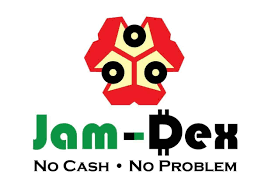Bank of Jamaica’s digital currency, Jam-Dex is Arriving Soon

The Bank of Jamaica (BOJ) has revealed that it has selected the name JAMAICA DIGITAL EXCHANGE – JAM-DEX, as well as the tagline “No cash, no problem!” and logo for its digital currency, which will be launched later this year.
The choices for the digital currency’s branding came as a result of a public competition organized by the bank, with a panel of judges that included Natalie Haynes, BOJ Deputy Governor in charge of Banking, Currency, and Financial Markets Infrastructure. BOJ Communications Director Tony Morrison, BOJ Senior Graphic Artist Tashna Bulli, Project Director in the Ministry of Culture, Gender, Entertainment, and Sport (and former BOJ employee), and others were also on the panel.
Ashley Payne, who suggested the tagline, won J$600,000 ($3,862) and J$50,000 in CBDC, while Gerrard Harvey, who designed the logo, won J$350,000 ($2200) in regular currency and J$25,000 in CBDC.
The BOJ recently completed an eight-month pilot program for its central bank digital currency, which will end at the end of 2021. In early August, the bank minted 230 million Jamaican dollars (or $1.5 million) in digital currency to be distributed to deposit-taking institutions and authorized payment service providers, and then distributed 1 million JMD ($6,500) in CBDC to employees. The bank issued 5 million JMD ($32,000) in CBDC to the National Commercial Bank (NCB), one of the island’s largest financial institutions, in October.
According to Natalie Haynes, the Bank of Jamaica’s (BOJ) deputy governor for banking and currency operations and financial markets infrastructure, the BOJ aims to replace 5% of Jamaican dollars with digital currency each year. According to the bank, NCB has signed up 57 customers to use the CBDC.
The majority of Jamaicans are financially excluded. To get those persons into the formal financial system, we decided that the central bank digital currency would be a good opportunity.”
Natalie Haynes, BOJ deputy governor
Go deeper
The global financial system is approaching a cashless future in which physical money will be replaced by digital currencies such as cryptocurrency.
In response to the global rise of digital payment solutions, central banks worldwide are developing their own central bank digital currencies (CBDCs), which are representations of central bank-issued money that can be built on a blockchain or distributed ledger.
Nigeria launched its version of digital currency, the eNaira, in October 2021, becoming one of the first countries in the world to do so (CBDC). Other African countries, including Kenya and South Africa, have also made efforts to formalize their CBDCs.
The launch of Jamaica’s digital currency follows a joint effort by a number of Eastern Caribbean nations to launch DCash, a digital currency. The Bahamas was the first country in the region to introduce a digital currency. This CBDC, known as the Sand Dollar, has been in circulation since 2020.
Globally, central banks have attacked crypto assets, but are in support of a CBDC, which is thought to be more stable and affords them a measure of control.








